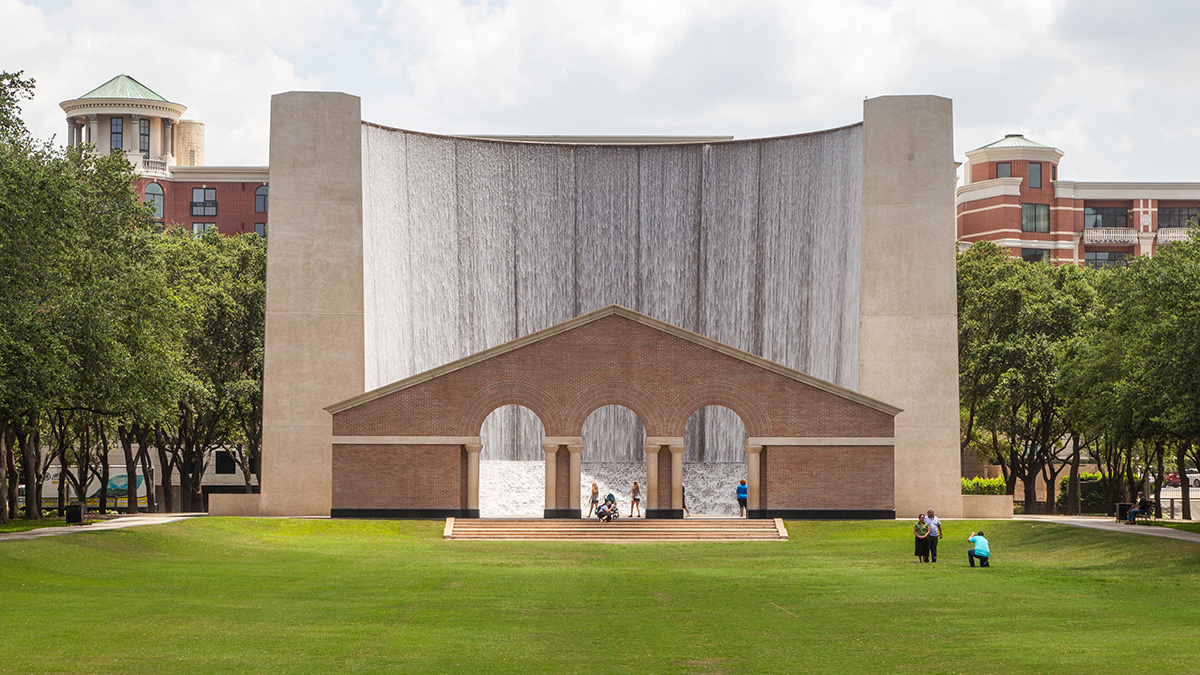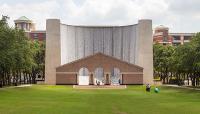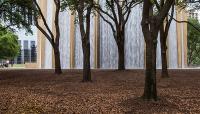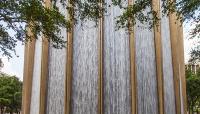Landscape Information
Designed by SWA Group and completed in 1985, this 2.77-acre park in the Uptown District enframes the 64-foot-high, sculptural fountain popularly known as the Waterwall. The site was originally developed in the early 1980s by real estate magnate Gerald D. Hines, who commissioned a fountain to be built within a park-like setting adjacent to the nearby Williams Tower (formerly Transco Tower), commissioned by Hines at the same time.
The park’s sole architectural feature, the 64-foot-high, semi-circular, Postmodernist fountain was designed by John Burgee Architects with Philip Johnson. Recirculated water pours curtain-like over its inner and outer surfaces at the rate of 11,000 gallons per minute. The concave side of the fountain is enclosed by a low, pedimented arcade (the so-called scaenae frons) defined by centralized steps, with the whole form recalling an ancient Roman theater. The falling water creates noticeably cooler temperatures within the enclosure. On the convex side, channels of water cascade into a shallow pool set into a semi-circular, paved apron. The Waterwall sits opposite the south façade of Williams Tower, with the two united by an expansive sunken lawn that monumentalizes the approach to each. Flanked by a pair of linear walkways, the lawn and the fountain are embraced on three sides by 186 live oaks, set in a quadruple allée. In 2008 the City of Houston purchased the Waterwall and surrounding land from Hines and one year later renamed the site to honor him for his many civic contributions.

















